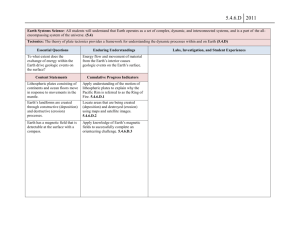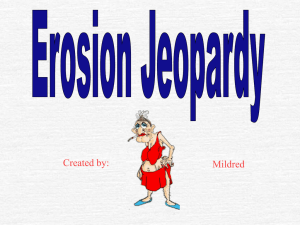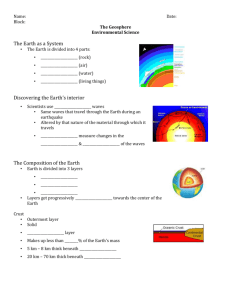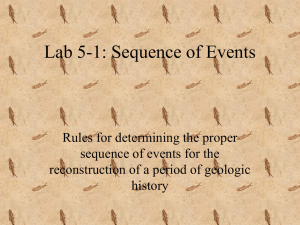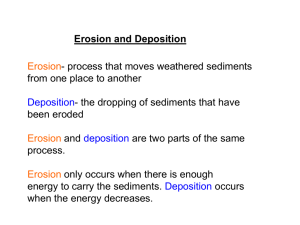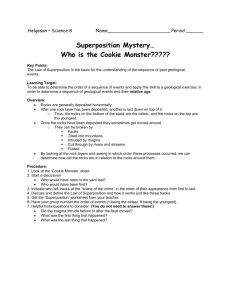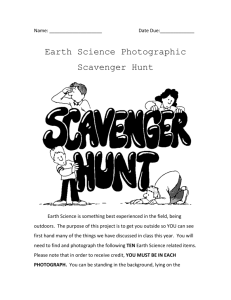Make-Up Work Online - differ
advertisement
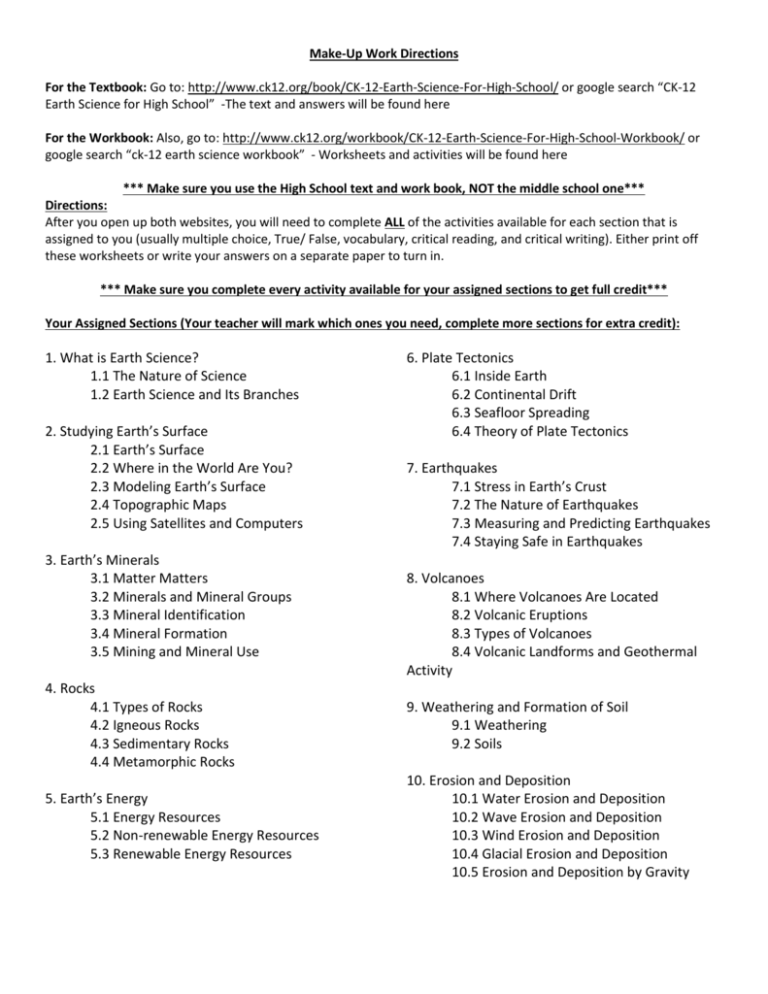
Make-Up Work Directions For the Textbook: Go to: http://www.ck12.org/book/CK-12-Earth-Science-For-High-School/ or google search “CK-12 Earth Science for High School” -The text and answers will be found here For the Workbook: Also, go to: http://www.ck12.org/workbook/CK-12-Earth-Science-For-High-School-Workbook/ or google search “ck-12 earth science workbook” - Worksheets and activities will be found here *** Make sure you use the High School text and work book, NOT the middle school one*** Directions: After you open up both websites, you will need to complete ALL of the activities available for each section that is assigned to you (usually multiple choice, True/ False, vocabulary, critical reading, and critical writing). Either print off these worksheets or write your answers on a separate paper to turn in. *** Make sure you complete every activity available for your assigned sections to get full credit*** Your Assigned Sections (Your teacher will mark which ones you need, complete more sections for extra credit): 1. What is Earth Science? 1.1 The Nature of Science 1.2 Earth Science and Its Branches 2. Studying Earth’s Surface 2.1 Earth’s Surface 2.2 Where in the World Are You? 2.3 Modeling Earth’s Surface 2.4 Topographic Maps 2.5 Using Satellites and Computers 3. Earth’s Minerals 3.1 Matter Matters 3.2 Minerals and Mineral Groups 3.3 Mineral Identification 3.4 Mineral Formation 3.5 Mining and Mineral Use 6. Plate Tectonics 6.1 Inside Earth 6.2 Continental Drift 6.3 Seafloor Spreading 6.4 Theory of Plate Tectonics 7. Earthquakes 7.1 Stress in Earth’s Crust 7.2 The Nature of Earthquakes 7.3 Measuring and Predicting Earthquakes 7.4 Staying Safe in Earthquakes 8. Volcanoes 8.1 Where Volcanoes Are Located 8.2 Volcanic Eruptions 8.3 Types of Volcanoes 8.4 Volcanic Landforms and Geothermal Activity 4. Rocks 4.1 Types of Rocks 4.2 Igneous Rocks 4.3 Sedimentary Rocks 4.4 Metamorphic Rocks 9. Weathering and Formation of Soil 9.1 Weathering 9.2 Soils 5. Earth’s Energy 5.1 Energy Resources 5.2 Non-renewable Energy Resources 5.3 Renewable Energy Resources 10. Erosion and Deposition 10.1 Water Erosion and Deposition 10.2 Wave Erosion and Deposition 10.3 Wind Erosion and Deposition 10.4 Glacial Erosion and Deposition 10.5 Erosion and Deposition by Gravity 11. Evidence About Earth’s Past 11.1 Fossils 11.2 Relative Ages of Rocks 11.3 Absolute Ages of Rocks 12. Earth’s History 12.1 Early Earth 12.2 The Precambrian 12.3 Phanerozoic Earth History 12.4 History of Earth’s Complex Life Forms 13. Fresh Water 13.1 Water on Earth 13.2 Surface Water 13.3 Groundwater 14. Oceans 14.1 Introduction to the Oceans 14.2 Ocean Movements 14.3 The Seafloor 14.4 Ocean Life 15. Earth’s Atmosphere 15.1 The Atmosphere 15.2 Atmospheric Layers 15.3 Energy in the Atmosphere 15.4 Air Movement 16. Weather 16.1Weather and Atmospheric Water 16.2 Changing Weather 16.3 Storms 16.4 Weather Forecasting 17. Climate 17.1 Climate and Its Causes 17.2 World Climates 17.3 Climate Change 18. Ecosystems and Human Populations 18.1 Ecosystems 18.2 The Carbon Cycle and the Nitrogen Cycle 18.3 Human Populations 19. Human Actions and the Land 19.1 Loss of Soils 19.2 Pollution of the Land 20. Human Actions and Earth’s Resources 20.1 Use and Conservation of Resources 20.2 Energy Conservation 21. Human Actions and Earth’s Water 21.1 Humans and the Water Supply 21.2 Problems with Water Distribution 21.3 Water Pollution 21.4 Protecting the Water Supply 22. Human Actions and the Atmosphere 22.1 Air Pollution 22.2 Effects of Air Pollution 22.3 Reducing Air Pollution 23. Observing and Exploring Space 23.1 Telescopes 23.2 Early Space Exploration 23.3 Recent Space Exploration 24. Earth, Moon and Sun 24.1 Planet Earth 24.2 Earth’s Moon 24.3 The Sun 24.4 The Sun and the Earth-Moon System 25. The Solar System 25.1 Introduction to the Solar System 25.2 Inner Planets 25.3 Outer Planets 25.4 Other Objects in the Solar System 26. Stars, Galaxies, and the Universe 26.1 Stars 26.2 Galaxies 26.3 The Universe
